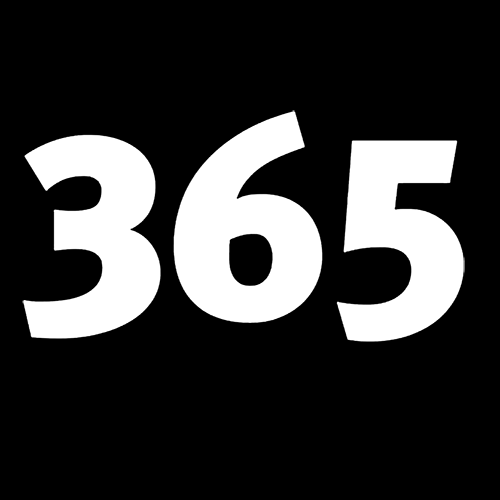Author: Jay Goldberg
In my entrepreneur course, I teach the Zig Zigler sales method. Before I do, however, I ask the participants if they feel they have good sales skills. I then tell them, if they do, continue doing what they have been doing successfully and they can ignore this lecture. And that is what I will do here. If you have a station that is successfully getting and keeping listeners, you can skip over this column. If not, read it and see if it makes sense for you.
In my corporate career and consulting business, as well as my entrepreneurship course, I teach and perform strategic planning. The tool I use is SWOT analysis with an accompanying SWOT Plan of Action. Here I'm going to use a simplified and slimmed-down strategic planning process to look at the radio industry.
Before I start I want to state, what I feel, is a basic truth about music lovers. At one point in time all people who enjoyed listening to music on the radio looked forward to finding new favorite songs and artists. Many, however, eventually got “stuck in time” or “stuck in genre” because they didn't like the direction music took (in the past – particularly the 60s, 70s, 80s – this direction was often dictated by record labels).
For those unaware SWOT stands for Strengths, Weaknesses (where you have at least some control), Opportunities, and Threats (where you have little to no control). And when performing SWOT analysis, the areas SWOT is applied to are the industry, the specific business and the business' management team.
There are usually multiple items in each SWOT category. For this simplified and slimmed-down exercise, I will use only one item per category.
- S – Radio station is part of the Live365 network of radio stations which provides instant credibility to artists, promoters, record labels, and sites offering free music to radio stations; and projects can expand beyond a single station to a portion of, or the entire network of stations.
- W – With the sheer number of radio stations, it is difficult to come up with a unique format to differentiate your station.
- O – There is lots of new music being produced – and all kinds of music – and the new music does not have to conform to the latest trends in music as pushed by the large record labels.
- T – People now have customized options, outside of purchasing songs, to listen to music where they can choose and personalize the music they listen to (e.g. Pandora, Amazon Music, etc.); and those options have ways for people to listen to them instead of tuning into radio stations.
The goal of a SWOT Plan of Action is to take advantage of the Strengths, overcome the Weaknesses, capitalize on the Opportunities, and minimize or neutralize the Threats. Mixing in songs from indie and small label artists addresses the above SWOT items.
- S – Indie artists, promoters, small record labels, and sites offering free music to radio stations will send you music or allow you to sign up because of your Live365 association.
- W – By mixing in a few indie songs or artists you can differentiate your station from others playing the same format without those songs/artists. Keep in mind the truth I wrote about at the start of this column – at one time all your listeners looked forward to finding new favorite songs and artists – they just didn't like the direction new music went in.
- O – Because indie artists don't have to conform to what large record labels are looking for, they can write songs however they want, so there are lots of different genres of music to choose from; including songs/artists that like and are influenced by music of the past. So, if for example you have a station that plays rock music of the 70s, you can screen indie music and play indie music that would appeal to lovers of 70s music. This would differentiate your 70s station from other 70s stations. So, this is not only taking advantage of the opportunity, but also overcoming the weakness.
- T – There is nothing you can do to stop people from listening to personalized music services such as Pandora or Amazon Music. But you can help make those experiences better for them. They can tune into your station to find new songs and artists to add to their personalized services. And by just mixing in some indie and small label artist songs you are not “hitting them over the head” with new stuff since they will hear a lot of their familiar and favorite music as well. And who knows, if they like finding the new songs while listening to their favorite genre, they just may start tuning in more and more often. After all, using the 70s rock station as an example, wouldn't your format be more similar to what they listened to originally than a station that didn't mix in some new songs and artists?
Now onto this month's five songs.
“Cry Like a Wolf” by Atomic
Atomic is an indie band from Germany where they have performed over 300 concerts. And the band does not come from Hamburg, Berlin, Munich, Cologne, or Frankfurt, but from the deepest Bavarian Forest – from where the two twin brothers Thomas and Rainer Marschel set out in 2000 to make their dream come true.
“Heart of the Night” by Dreadsunshine
Dreadsunshine is from Finland. Tero Hautamäki is known in Finland as an indie metal artist. This time distorted guitars are left in the background when he dives deep to the alternative music of his youth. The new band is called Dreadsunshine and this is their first single.
“The Long Ride Home” by Daniel James Durand
Daniel James Durand is a singer-songwriter from the northwest woods of Rhode Island in the U.S. The long ride in the song appears to be more about a state of mind than a distance. The song is on his album of the same name.
“Pepper” by Death Cab for Cutie
This song reached #23 on the Canada Rock Chart, and didn't chart in the U.S. or U.K.; but if you like this band, the song is worth a listen. And if you don't know this band, you should start with their song “Soul Meets Body.”
“Could You” by He Said
He Said was the name used by Wire member Graham Lewis for his solo releases in the 1980s. He Said released two albums Hall and Take Care. Wire was on the forefront of post-punk, a genre that consisted of punk's energy but was more experimental than straight-forward.
All "The Music Scout (Alternative)" content rights reside with the author.
Ready to start your own station? Contact one of our Product Consultants or visit our website today. Discover thousands of free stations from every genre of music and talk at Live365.com. Rather listen on our app? Download the Live365 app on iOS or Android. Keep up with the latest news by following us on Facebook (Live365 (Official) and Live365 Broadcasting) and Twitter (@Live365 and @Broadcast365)! You can also shop Live365 swag and branded merchandise at store.live365.com.
Article Image: The text "The Music Scout" with the white Live365 logo underneath, next to an animated person with headphones.


